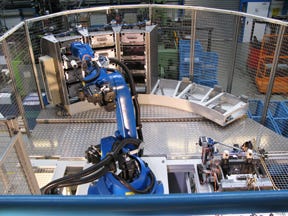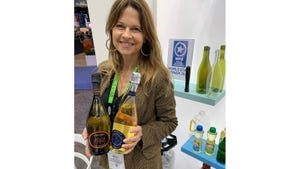Complex line stands behind household brush production
By adding a 6-axis robot to the production cell, moldmaker Zahoransky was able to save its customer up to 75% of its complete production cycle time by better synchronizing the molding process with downstream processes so that, in effect, the injection time equals the cycle times at the external cooling and demolding station.
December 30, 2009
By adding a 6-axis robot to the production cell, moldmaker Zahoransky was able to save its customer up to 75% of its complete production cycle time by better synchronizing the molding process with downstream processes so that, in effect, the injection time equals the cycle times at the external cooling and demolding station.
|
The customer, an unidentified manufacturer of household brushes, recently took delivery of the fully automatic production cell and is using it to produce a wide variety of different injection molded brush elements. Zahoransky reckons it can prove helpful for other molding projects especially of thick-walled parts that are required in small quantities but in different sizes and colors.
The production cell consists of a multicomponent injection-molding machine and an external demolding and cooling station made in-house by Zahoransky (Freiburg, Germany). The connecting element between the three production stations is a 6-axis robot which allows the individual phases of the injection molding process to be synchronized, a step the moldmaker says will save its customer as much as 75% in cycle time, particularly for thick-walled components. In short, the robot ensures that the molding machine’s injection time equals the cycle time of the external cooling and demolding station.
After injection, the robot removes the entire mold block and places it in the single rack of the cooling station. At the rack, the robot grips a cooled block from another rack and swivels it to the demolding station, which also was developed by Zahoransky. A second robot takes the finished parts and places these in a storage box. The 6-axis robot returns and mounts the empty mold in the molding machine, and reaches for the newly filled mold at the ejector side. A new cycle begins.
Flexibility is realized in terms of shape, size, and color. The injection molding machine used is equipped with five injection units. Using the four side units, the skin of the component can be molded in different colors. The core material, recyclate with a blowing agent added to it, is then injected. For each product, a separate and distinct software menu for the process parameters of every component is stored in the SPC developed by the system supplier. Between shots, automated production processes for as many as 24 different products in a maximum of four colors are feasible at the same time. According to the supplier, there is no downtime during color or mold changes. —Matt Defosse
About the Author(s)
You May Also Like



